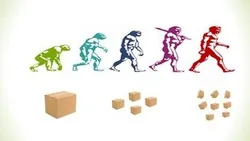
Basics of Microservices 
This course will provide an introduction to the basics of microservices, including the differences between monoliths, SOA, and microservices, the advantages of microservices, and design considerations when adapting microservices. Through practical examples and design walkthroughs, you will gain an understanding of the issues with monoliths, how the industry arrived at SOA, and why microservices are the best fit for certain applications. By the end of the course, you will have a good understanding of microservices and how to determine if it is the right fit for you. ▼
ADVERTISEMENT
Course Feature
![]() Cost:
Cost:
Free
![]() Provider:
Provider:
Udemy
![]() Certificate:
Certificate:
Paid Certification
![]() Language:
Language:
English
![]() Start Date:
Start Date:
On-Demand
Course Overview
❗The content presented here is sourced directly from Udemy platform. For comprehensive course details, including enrollment information, simply click on the 'Go to class' link on our website.
Updated in [May 25th, 2023]
Welcome to Basics of Microservices! In this course, you will learn the differences between Monolith, SOA, and Microservices, and how they have evolved over time. You will also gain an understanding of why Microservices are becoming increasingly popular, who should be using them, and what considerations need to be made when adapting them. By the end of this course, you will have a fair amount of knowledge on what a typical Monolith looks like, the issues with Monolith, how the industry arrived at SOA, the issues with SOA, why Microservices, the advantages of Microservices, and how to make sure if Microservices is the best fit for you.
This course provides an overview of the differences between Monolith, SOA, and Microservices, and how they have evolved over time. It also covers why Microservices are becoming increasingly popular, who should be using them, and what considerations need to be made when adapting them.
Possible Development Directions: After completing this course, you will have a better understanding of the differences between Monolith, SOA, and Microservices, and how they have evolved over time. You will also be able to identify the advantages of Microservices and who should be using them.
Related Learning Suggestions: To further your understanding of Microservices, you may want to consider taking courses on topics such as distributed systems, cloud computing, and software architecture. Additionally, you may want to look into the various frameworks and tools available for developing and deploying Microservices.
[Applications]
After completing this course, participants should be able to apply the concepts of microservices to their own projects. They should be able to identify when microservices are the best fit for their project, and be able to design and implement a microservices architecture. Additionally, they should be able to identify the advantages and disadvantages of microservices, and be able to address any issues that may arise when using microservices.
[Career Paths]
1. Microservices Architect: A Microservices Architect is responsible for designing, developing, and deploying microservices-based applications. They must have a deep understanding of the microservices architecture and be able to design and develop applications that are scalable, secure, and reliable. The role is becoming increasingly important as more organizations are adopting microservices-based architectures.
2. DevOps Engineer: DevOps Engineers are responsible for automating the deployment and management of microservices-based applications. They must have a deep understanding of the microservices architecture and be able to design and develop automated processes that are secure, reliable, and efficient. The role is becoming increasingly important as more organizations are adopting microservices-based architectures.
3. Cloud Engineer: Cloud Engineers are responsible for designing, developing, and deploying cloud-based applications. They must have a deep understanding of the cloud architecture and be able to design and develop applications that are secure, reliable, and efficient. The role is becoming increasingly important as more organizations are adopting cloud-based architectures.
4. Data Scientist: Data Scientists are responsible for analyzing and interpreting data to gain insights and make predictions. They must have a deep understanding of data science and be able to design and develop algorithms that are accurate, reliable, and efficient. The role is becoming increasingly important as more organizations are leveraging data to make decisions.
[Education Paths]
1. Bachelor of Science in Computer Science: This degree path focuses on the fundamentals of computer science, such as programming, software engineering, and computer architecture. It also covers topics such as artificial intelligence, machine learning, and data science. This degree path is ideal for those interested in developing and deploying microservices, as it provides a strong foundation in the fundamentals of computer science.
2. Master of Science in Software Engineering: This degree path focuses on the design and development of software systems, including microservices. It covers topics such as software architecture, software development, and software testing. It also covers topics such as distributed systems, cloud computing, and service-oriented architecture. This degree path is ideal for those interested in developing and deploying microservices, as it provides a deep understanding of software engineering principles.
3. Master of Science in Computer Science: This degree path focuses on the fundamentals of computer science, such as programming, software engineering, and computer architecture. It also covers topics such as artificial intelligence, machine learning, and data science. This degree path is ideal for those interested in developing and deploying microservices, as it provides a strong foundation in the fundamentals of computer science.
4. Master of Science in Cloud Computing: This degree path focuses on the design and development of cloud-based systems, including microservices. It covers topics such as cloud architecture, cloud development, and cloud security. It also covers topics such as distributed systems, service-oriented architecture, and DevOps. This degree path is ideal for those interested in developing and deploying microservices, as it provides a deep understanding of cloud computing principles.
The development trends for these degree paths include the increasing use of cloud computing, the emergence of DevOps, and the growing demand for microservices. As the demand for microservices continues to grow, these degree paths will become increasingly important for those interested in developing and deploying microservices.
Pros & Cons

Basic insight to microservices, Direct to the point, Inspires curiosity, Good for basic understanding, Easy to understand, Very good concepts.

Waste of time, No implementation details, Real time example not too good, Difficult to understand speech.
Course Provider

Provider Udemy's Stats at AZClass
Discussion and Reviews
0.0 (Based on 0 reviews)
Explore Similar Online Courses

FREE Emotional Development for Engineers and Scrum Masters

How to Use QuickBooks Desktop 2022 - 45 Hour QuickBooks Beginner Training Tutorial!

Python for Informatics: Exploring Information

Social Network Analysis

Introduction to Systematic Review and Meta-Analysis

The Analytics Edge

DCO042 - Python For Informatics

Causal Diagrams: Draw Your Assumptions Before Your Conclusions

Whole genome sequencing of bacterial genomes - tools and applications

Microservices Explained in 5 Minutes

Microservices Architecture and Implementation on NET 5


Start your review of Basics of Microservices